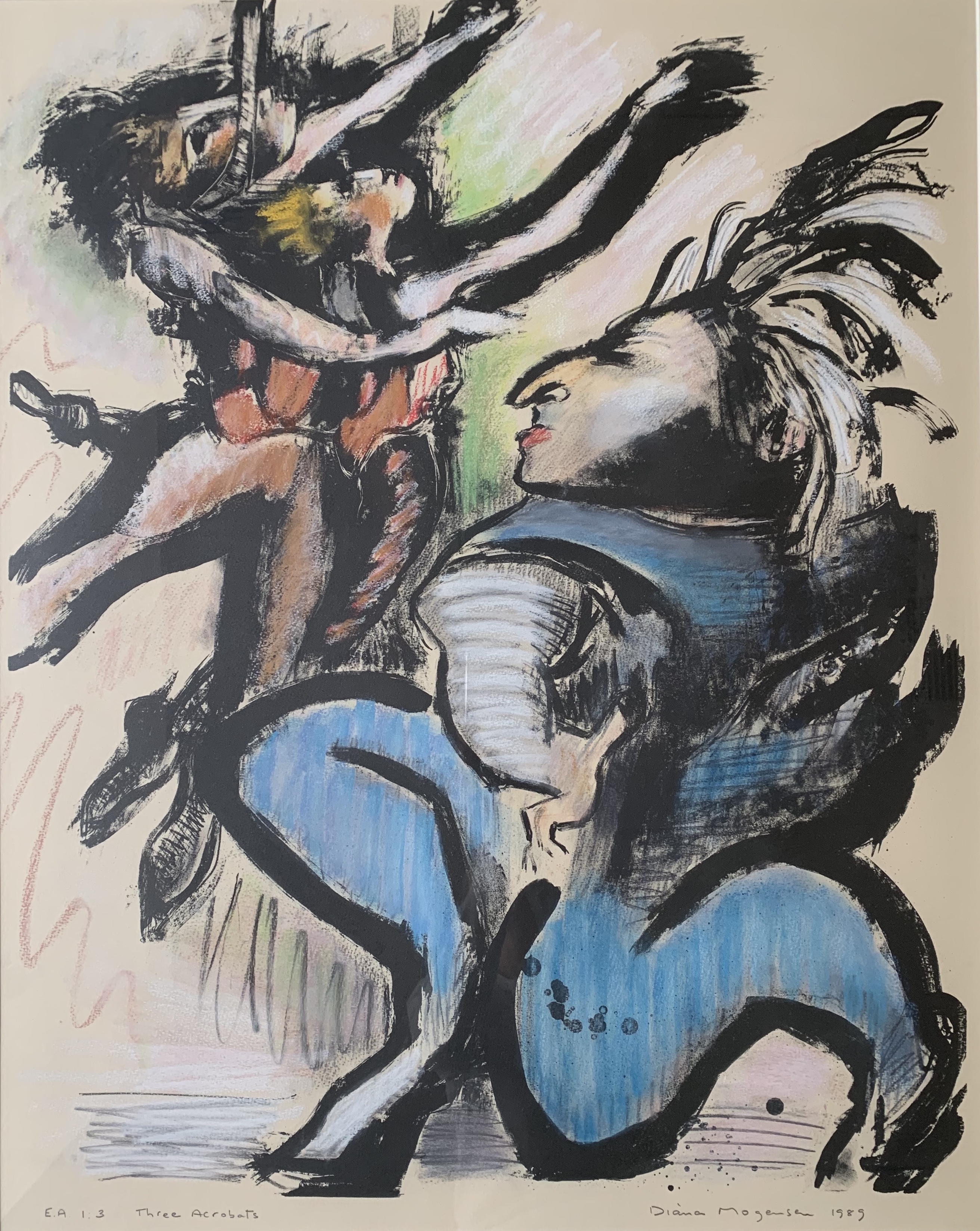Three Acrobats
Diana Mogensen

Details
- Artist
- Diana Mogensen
- Title
- Three Acrobats
- Year
- 1989
- Medium
- hand coloured lithograph (artist proof)
- Size
- 78.5 x 62 cm
- Details
signed lower right: Diana Mogensen
© Estate Diana Hoddle Mogensen
Further Information
Acrobats and circus figures are of enduring appeal to visual artists with their colourful costumes and intricate body poses. Mogensen created an extensive series of works inspired by Ashton’s Circus at Burnley Oval, experienced over a ten year period.
In Three Acrobats, she captures the vibrant energy of the figures, bringing the scene exuberantly to life; two figures poised in the air against the main theatrical figure proudly posing as he dramatically makes his landing, and balancing the composition, which is played out to the very edges of the paper.
This figure has been identified as Jonaas Zilinskas, an international acrobat and trapeze artist, a figure Mogensen represented on numerous occasions, with drawings held in the collection of the National Library of Australia and the National Gallery of Victoria.
The fluid black lines, complimented by strong primary colours, demonstrate Mogensen’s confidence in drawing and skilful lithographic technique, with its strong links to drawing, which she took up in 1987.
Perhaps another attraction to the circus performer is an empathy with their necessary practice and obvious commitment to their art. Noel Counihan fostered Mogensen’s dedication to art, encouraging her studies and her time living in Paris where she studied at the Academie de la Grande Chaumiere, focussing on drawing. Mogensen’s return to Australia in 1971 saw her first solo exhibition at Australian Galleries. Mogensen was a much admired artist and her works are rarely available.
“Strong bold lines tinged with barely repressed arabesque intent simultaneously trap physiognomical niceties and establish a formal undercurrent of line that functions independently of mimetic demands. Mogensen’s Jonaas aims for a three-pronged achievement: the accurate defining of physiognomy, capturing the essence of character, and structuring of a holistic composition. Operating this conceptual triangle of intent, Mogensen thus abandons the traditional fidelity of the portrait mode to explore the potential for psychological penetration offered by impulsive linear improvisation before the sitter.”
Ted Gott, Backlash – The Australian Drawing Revival, National Gallery of Victoria, exhibition catalogue, 1986
